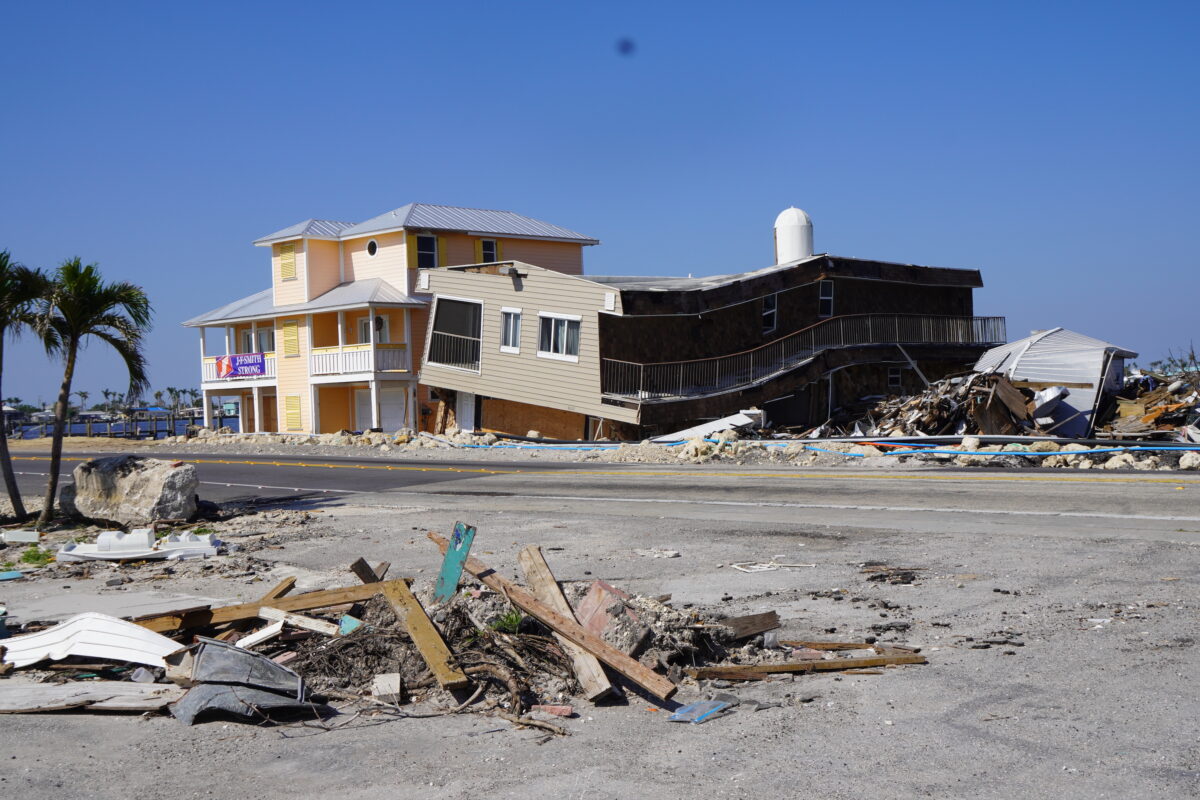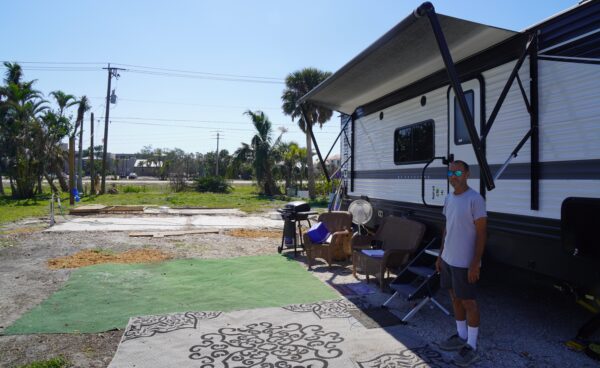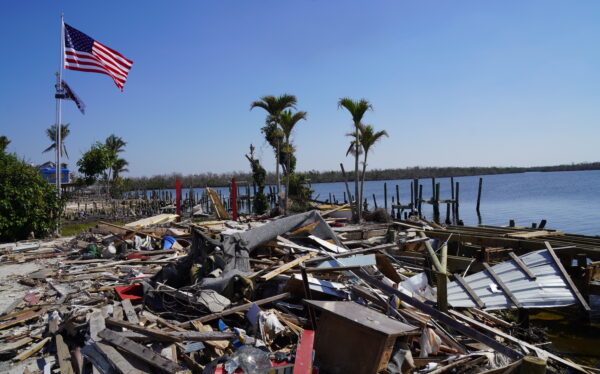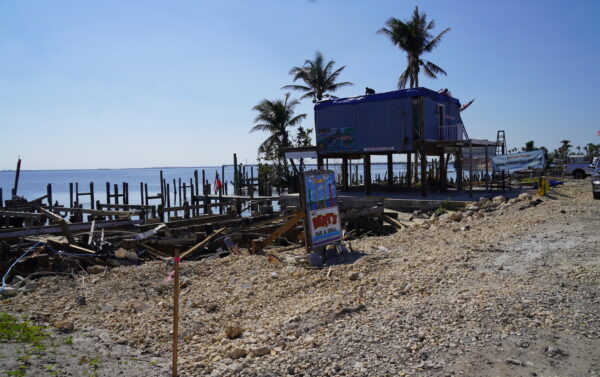


MATLACHA, Fla.—Jeff Funchion sits in a wicker loveseat in the slim shade of a travel trailer with a fan pushing air and carpets unrolled before him on a crushed-shell driveway with a 50-foot long cement pad at the end.
He’s waiting for a buyer this Sunday afternoon, hoping someone will come along and purchase his lot with its vacant pad. Plus, he lives here.
Funchion lived for 14 years in a single-wide Detroiter until Hurricane Ian’s 155-mph winds whipped a Circle K sign from miles away into it and swamped his mobile home park in five feet of angry water.
“There was no salvaging,” said the Michigan native, a carpenter. “The cost to rebuild here is so high, I can’t afford it.”

Funchion has been living on his scoured lot in a 21-foot Keystone trailer provided by the Federal Emergency Management Agency (FEMA) since his home was hauled away in dumpsters.
“There’s nothing. No place” habitable to rent or buy anywhere for miles so, his best bet is selling “real fast,” he said, conceding with a shrug, “But you see how that’s working out.”
Five months have passed since the storm and there are thousands of empty lots with vacant pads and thousands of people like Funchion living in limbo.
Their homes uprooted and lives suspended while subsisting in a disaster zone that spans Fort Myers Beach, Pine Island, and Sanibel Island in Lee County, and broad swaths south to Naples and north to Venice.

Category 4 Ian came ashore Sept. 28, 2022, killing 149 people, leaving millions without power for weeks, causing—at last count (and the counting isn’t over)—at least $139 billion in damage.
It was the deadliest hurricane to strike Florida since the 1935 Labor Day hurricane and the third most-costly hurricane disaster in United States’ history.
Ian was particularly brutal along the Southwest Florida coast from Naples north through Cape Coral and Punta Gorda with Lee County bearing the brunt.
Nearly all structures were destroyed or damaged in Fort Myers Beach, Pine Island, and Sanibel Island—the pearls of Lee County’s $3.5 billion tourism industry—with bridges between islands battered and degraded.

Five months later, Ian’s rampage still vividly scars the land.
There are forests of broken oak and saw palmetto, streets of still-boarded businesses and restaurants—Fort Myers Beach remains without power—buildings roofed in blue tarp, and roads without streetlights, traffic lights, or street signs lined with debris, busted billboards, and beached boats.
Funchion is among 60 retired and working class lot owners in Cottage Point mobile home park off Summerlin Road, just east of the Sanibel Causeway and north of Fort Myers Beach.
Unable to live in their dwellings and lacking the insurance to replace them, many aren’t sure where they are going next.

Dan and Jan Langenfeld, who for five years owned two Cottage Point lots that housed separate trailers, including one they rented, are among those who do know where they are going—back to their hometown, Hastings, Minnesota.
“We’re not going to rebuild. It costs too much,” Jan said, noting Lee County is not exempting—or “grandfathering in”—replacements for storm-damaged structures from adhering to new zoning regulations which require “everything has to be 14 feet above sea level.”
“You have to either laugh about it or cry about it,” Dan said, noting no Cottage Point home was insured and no one can get flood insurance anyway.
Jan said it took weeks for pools of saltwater from the storm surge to evaporate, leaving behind a crusted landscape of dead vegetation. It killed all her landscaping and trees, she said. “It’s like the ground was sterilized.”
But, she added, some grasses, weeds are starting to return. “It’s getting better,” Jan said. “If you were here for the first part, then it’s getting better in this part. And we’re still here—barely.”
Nearby, Steve who didn’t want to reveal his last name, was raking small rocks from the dirt around the empty pad on his lot. The wooden front porch attached to his home survived even though the home didn’t.
“Nothing wrong with the porch so we left it,” said Steve, who has lived in Cottage Point for 18 years and plans to put a new mobile home on the lot, attached presumably to the front porch.
He’s lived in Florida “40-something odd years” and Ian was “the worst storm probably since 1960.” The saddest thing, he said, is he’s not sure if he’ll ever see some of his neighbors and friends again.
Cottage Point is usually crowded this time of year, peak snowbird season, and area businesses bustling and booming.
“This year,” Steve said, “that’s a different story.”

